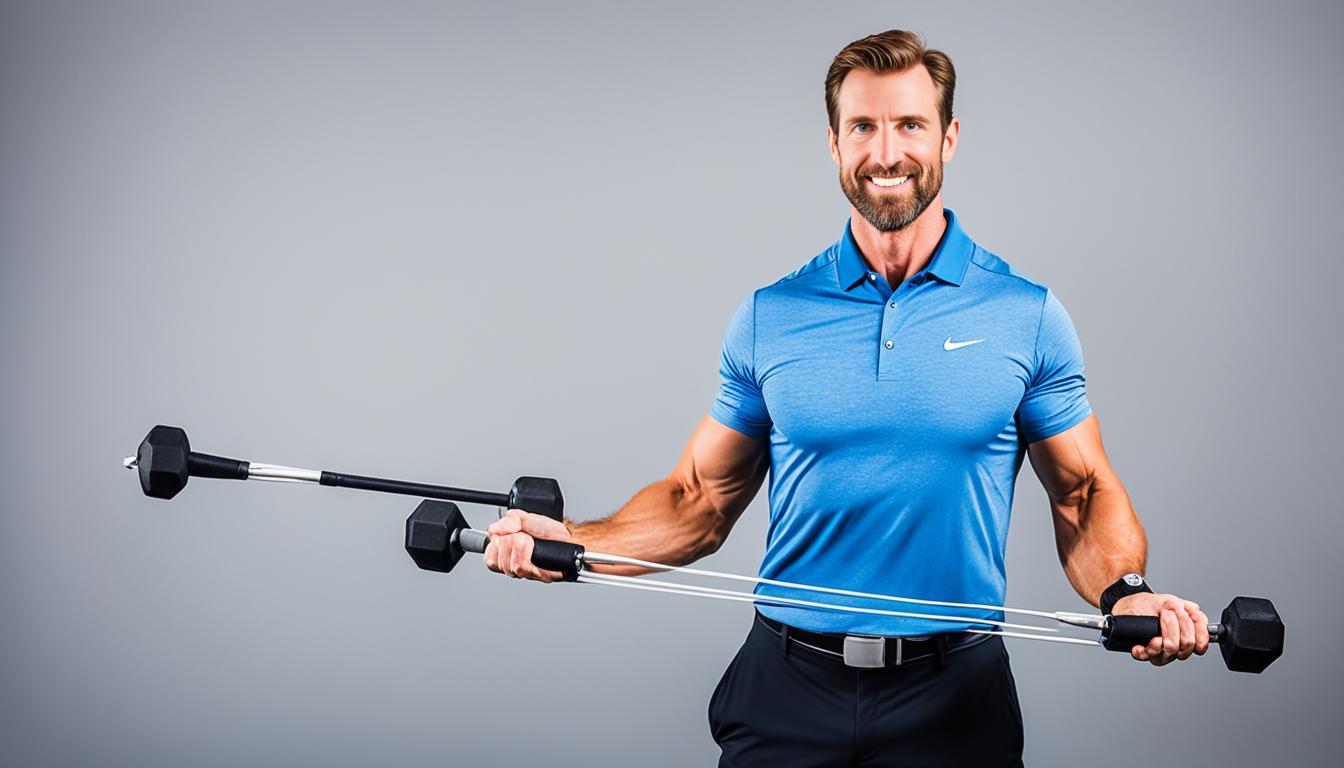Golfer’s elbow is a painful issue from using the forearm a lot. It causes swelling and tiny tears in the tendons at the inner part of the elbow. This problem is much like tennis elbow but hurts on the inside.
This pain comes from using the forearm and wrist a lot, like in golf. Signs you have it include aching elbows, less grip strength, and hurt when you move your wrist.
Doctors figure out if you have it by asking about how you use your arms, and by checking you. They might also take x-rays or do MRIs. To fix it, you might just need to rest your arm, wear something to help keep it still, or use ice. Sometimes though, surgery could be needed.
Now, there’s a cool way to treat golfer’s elbow without cutting. It uses special cells to fix the tendons and make them better again.
Key Takeaways:
- Golfer’s elbow is caused by overuse of the forearm muscles and tendons.
- Symptoms include elbow pain, stiffness, weakened grip, and pain exacerbated by gripping objects or flexing the wrist.
- Diagnosis involves medical history, physical examination, and diagnostic tests.
- Conservative treatments include activity restrictions, splints or braces, ice therapy, medications, occupational therapy, and ultrasound therapy.
- If conservative treatments fail, surgery may be recommended.
- Stem cell therapy offers a non-surgical treatment option for golfer’s elbow, promoting tissue healing and repair.
Advanced Non-Surgical Treatments for Elbow Pain: Stem Cell Therapy and SCP
Elbow pain can be treated without surgery. Two key options are stem cell therapy and super concentrated platelet (SCP) treatments. They use the body’s own cells to heal and repair the elbow.
Stem cell therapy puts stem cells into the injured area. These cells can change into different cell types. They kickstart the healing process, helping repair tendons and tissues. This method is good for conditions like tennis elbow and golfer’s elbow.
SCP treatment uses the patient’s platelets. Platelets have growth factors needed for healing. By putting a lot of these platelets right into the elbow, it helps fix damaged tissues. It’s great for issues like arthritis.
Both treatments avoid surgery and work quickly. They lead to faster healing and better results. They are perfect for people who want to get better without a lot of downtime.
Studies show these treatments are good for elbow problems like tendon issues. They help reduce pain and make the elbow function better. Stem cells and platelets can heal the elbow over the long term.
Having elbow pain? Consider these new treatments. Stem cell therapy and SCP can help. They relieve pain and improve your life without surgical risks.
Surgical Treatment and Post-Operative Care for Golfer’s Elbow
If other treatments don’t help with golfer’s elbow and you still have pain after 6-12 months, surgery might be needed. The main goal of the surgery is to take out the damaged tissue near the inner elbow. This helps blood flow to heal the area and lessen the pain. The operation is often done in a day, using anesthesia to sleep or to just numb the area. Doctors make a cut near the inner elbow, take out the bad tissue, and attach the tendon to the bone again.
After the surgery, you’ll need to wear a sling or cast to keep your elbow still. You should also keep your arm up when you can, to help with swelling, and use ice packs. It’s very important to do the exercises your physical therapist gives you. This will make your elbow strong and help you move it better. Most people do well after the surgery, but some might have trouble moving their elbow, or get an infection, or have parts of the cut open up again. To make sure you heal well, follow what your doctor tells you and go to all your check-up visits.

